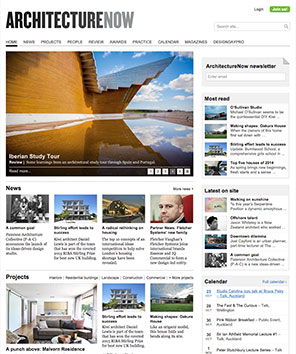Tracking Aotearoa’s carbon journey
Sustainable architecture advisor Francisco Carbajal looks at how Aotearoa is tracking on its decarbonisation journey and asks whether or not we are at risk of falling behind.

Over the past few years, New Zealand’s building and construction sector has been on the cusp of a significant industry-wide shift. The sector had been preparing for the mandatory measurement and reporting of carbon emissions, set out by the government and led by MBIE under the Building for Climate Change (BfCC) programme. With the building and construction sector responsible for around 20 per cent of New Zealand’s total emissions,1 the BfCC programme was designed to play a central role in achieving our climate commitments. Its aim was to reduce whole-of-life carbon from new buildings, progressively, starting with mandatory reporting in 2025, followed by carbon caps in 2026 and increasingly stringent limits through to 2030. These measures were directly linked to Aotearoa’s Nationally Determined Contributions (NDCs) under the Paris Agreement: our commitment to cut greenhouse gas emissions to 50 per cent below 2005 levels by 2030 and to help limit global warming to below 2°C.
Although ambitious, the programme was seen as globally progressive, placing New Zealand alongside some of the world’s most climate-forward nations. There was a genuine sense of industry-wide momentum, with government, professionals and industry bodies beginning to align around a shared decarbonisation pathway.
Yet, today, with a new government in 2023, shifting priorities and a growing economic downturn, that momentum has slowed. The BfCC programme once promised to set a clear national direction but recent signals suggest a softening stance. This uncertainty has dulled the sense of urgency and, with 2030 potentially just one project cycle away, the question grows louder: Are we, as an industry, still on track or are we at risk of falling behind?
Across the Tasman, the pace is accelerating. At the 2025 Australian Architecture Conference and Sydney Build Expo 2025, there was strong alignment among architects, engineers, builders, policy-makers and product manufacturers on the urgency of addressing carbon and on the way to do it. The conversation had shifted from intention to implementation. While many of the conversations and challenges mirrored those we face in New Zealand, including the housing crisis, rising construction costs and the need for healthy homes, a shared urgency around carbon stood out, driven by a growing recognition that the window for necessary action is rapidly closing.
At the Architecture Conference, the launch of the Architecture Industry Decarbonisation Plan 2025–2050 marked a significant step. It calls for immediate and ambitious action, framing this decade as a critical window of opportunity and responsibility for the industry to make an impact.
The report outlines Australia’s decarbonisation efforts, focusing on reducing carbon emissions and making a strong call to action for architects to lead, embedding carbon as a core design parameter alongside cost, quality and function. It also sets a target for all new buildings to be net-zero in operational energy by 2030: a significant leap from the fewer than five per cent that currently meet this standard. In addition, the report urges the 2025 edition of the National Construction Code (NCC) to mandate the measurement of embodied carbon across the industry: a progressive tone compared to the ongoing uncertainty in New Zealand. The report reinforces both the urgency of action in Australia and the growing momentum within the sector.
This is a fast-moving industry and, over the last two years, progress in New Zealand has been limited. At the Australian conferences I attended, I had expected to find Australia pulling ahead of New Zealand. However, what I found was surprising; New Zealand remains ahead in some areas. Although there’s a strong desire in Australia to understand carbon, the depth of understanding isn’t quite there yet. This may be attributed to the ambitious targets set early in New Zealand and the urgency that was once felt to be prepared.
And, while Australia has a longer road ahead, particularly with its fossil-fuel-heavy grid, it is setting its sights high. New Zealand may have the advantage of a highly renewable grid but, without follow-through, the momentum we once had won’t last. The irony is that there are fewer barriers in its way. This is not just about policy, it’s about pace.
New Zealand is in a rare position of strength. The risk isn’t merely falling behind Australia, it’s falling behind what we’re already capable of. We have one of the world’s most renewable electricity grids — currently sitting at 87 per cent — with a pathway to reach 100 per cent by 2030. Our steel industry is on the cusp of major change with the introduction of the Electric Arc Furnace. The concrete sector has made real progress in reducing cement content, and those practices are becoming widespread. We have a construction sector already grounded in timber and we’re home to innovative low-carbon products.

We also have the methodologies and tools to act now. MBIE released the Whole‑of‑Life Embodied Carbon Assessment: Technical Methodology (2022), which sets a national foundation for measuring emissions across a building’s life cycle. NZGBC has adopted and built on this, with the NZGBC Embodied Carbon Methodology — v2.0, providing more detailed guidance. Complementing these is BRANZ’s LCAQuick: a free life cycle assessment (LCA) tool that offers clear insights into carbon assessment, supported by a reliable New Zealand-specific database. Te Kāhui Whaihanga New Zealand Institute of Architects has also taken a clear stance by introducing new sustainability criteria — including carbon measurement — into its awards programme and by supporting its members in building carbon literacy through its ‘Demystifying Carbon’ workshops and webinars. We’re already better equipped than most and, with the National Embodied Carbon Data Repository launching later this year, there will be another valuable addition to New Zealand’s growing capability. The question is no longer what the regulations will require, or when they’ll arrive, but when and how we’re willing to lead this shift across the industry.
To succeed, we do not need to be perfect. We need to be prepared and upskilled. We need to stop treating carbon as someone else’s issue — a future regulation, a sustainability team’s task, a box to tick — and recognise it as central to our design responsibility. The next time we sketch a concept, choose a material or specify a detail, we are shaping emissions for the next 50 years. That’s the power of our profession. And that’s why inaction isn’t neutral; it’s a choice.
To move forward, we need to make low-carbon design business as usual. That means embedding carbon thinking into everyday practice, comparing materials, prioritising low-carbon solutions and reporting carbon impacts. Carbon should be included with project success metrics alongside performance, durability and cost. Equally important is creating a culture of openness and a willingness to ask for help.
• We need to normalise early-stage assessment, accepting that data will change as design progresses. This is the time when design decisions are most flexible and changes are least costly, providing an opportunity to reduce carbon.
• Every project, no matter how small, should have cement replacement in concrete. Cement replacements in concrete mixes can be specified with no impact on cost or programme. Talk to concrete suppliers and set emission targets in the specification.
• Alignment across the value chain must be ensured. Lowcarbon decisions can be undone if swapped out during procurement of cheaper, carbon-intensive alternatives.
• Design for disassembly and re-use should be required, minimising materials sent to landfill and enabling a circular building economy.
• Reporting Scope 3 emissions (upstream embodied carbon emissions) from building structures should be mandatory for large-scale developments.
And, for those who continue to hesitate, bear in mind that low carbon doesn’t equal high cost. This is not about compromise, it’s about clarity. LCA tools can help identify places where money is best spent, and lower carbon often signifies longer life, lower maintenance and stronger long-term value. There are commercial advantages in adopting these strategies, not just moral ones.
What emerged in Australia wasn’t only the talk of carbon. It was the framing of carbon performance as a metric of good design: an indicator of material efficiency, long-term value and resilience. Projects were presented where carbon was tracked alongside cost, time and quality. It did not hinder delivery; it enhanced each project.
This is our moment to lead, not to wait. The opportunity is still within reach but we must renew our ambition, not just in what we say but in what we do. And, if leadership won’t come from government, it must come from us.
Let’s not forget our unique position. We’re small. That’s our strength. We can adapt quickly, share knowledge widely and make meaningful change more rapidly than most countries can. This isn’t about falling behind Australia. It’s about taking responsibility for our own future and ensuring the architecture we create today holds up to the climate demands of tomorrow. We already have the tools.
We already have the knowledge. What we lack is urgency. We can lead. Let’s get on with it.










